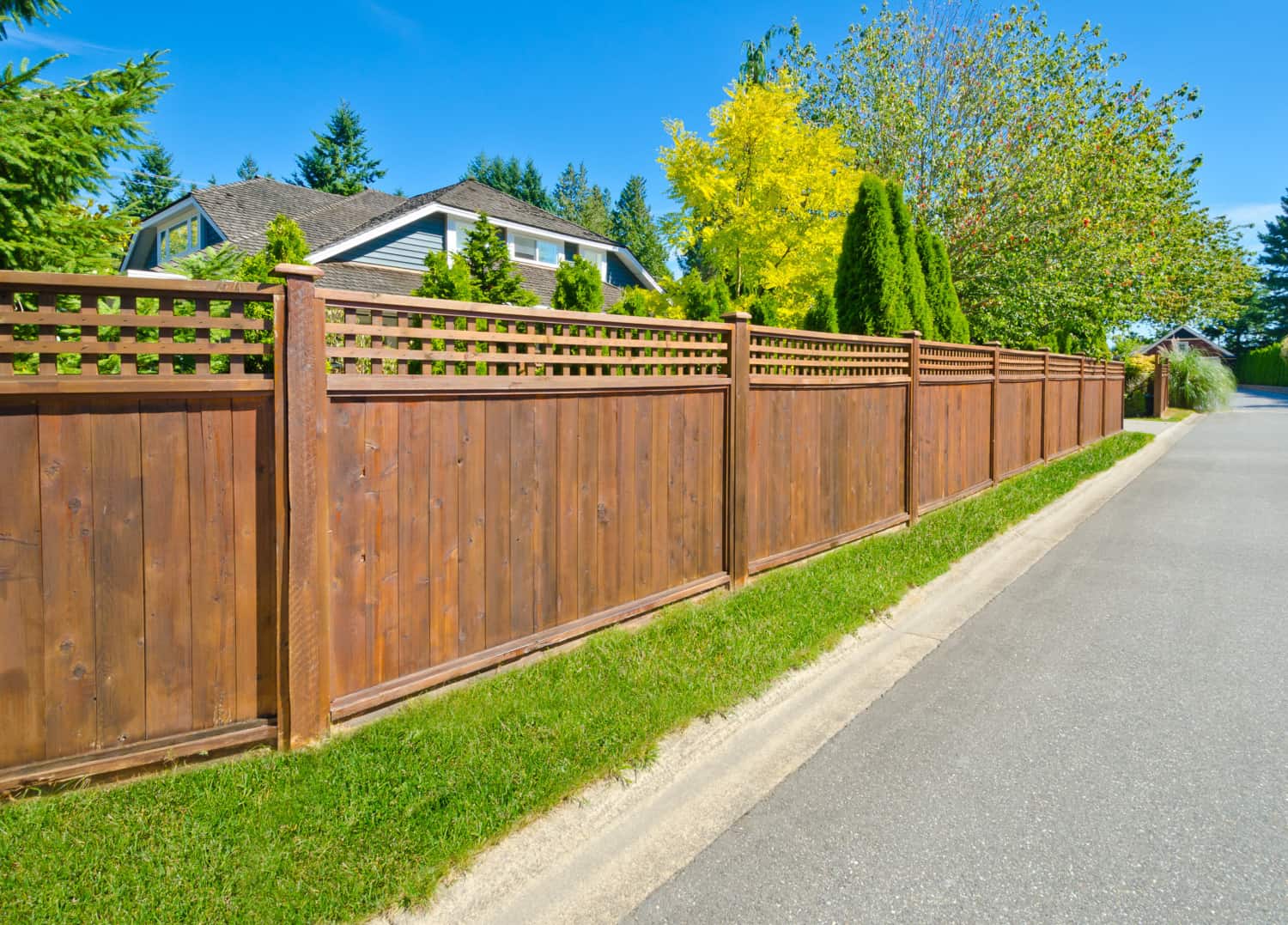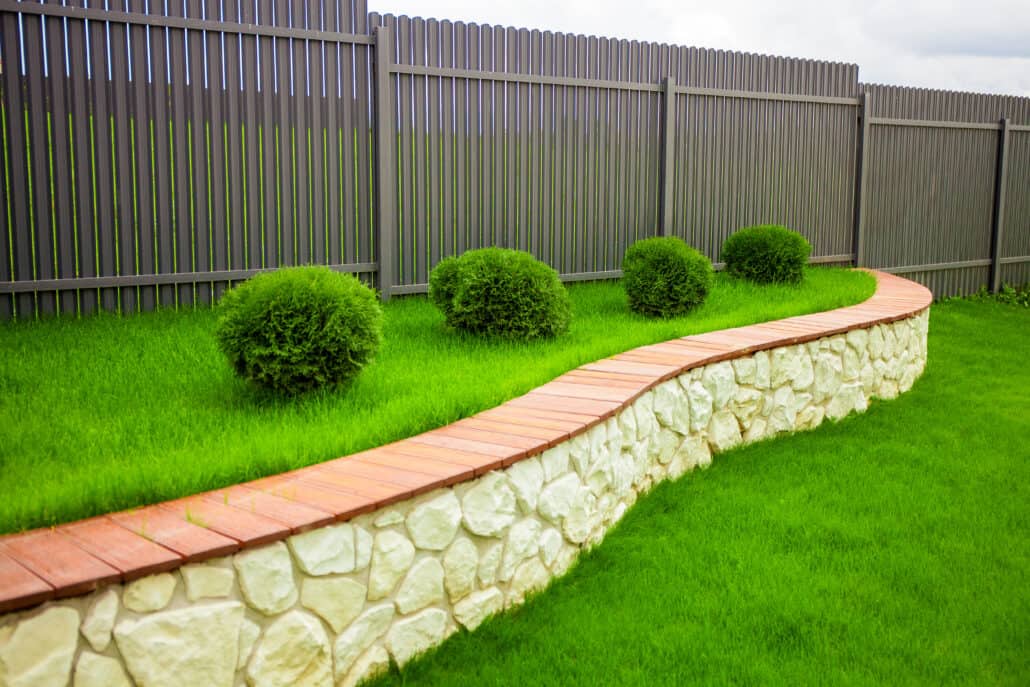All Categories
Featured
Fencings play a vital role in supplying personal privacy, security, and enhancing the curb allure of your residential property. Constant exposure to the components can lead to tear and put on. From heavy rainfall and snow to extreme sunlight and wind, weather-related damages is one of one of the most usual reasons for fencing deterioration. While you can not regulate the climate, there are numerous methods to secure your fencing from the harmful impacts of climate and ensure it lasts for many years to come.
Wooden Fencings: While wooden fencings are a classic selection, they are highly at risk to wetness and bugs. To make a wood fence extra sturdy, opt for pressure-treated lumber, cedar, or redwood.
Plastic Fences: Plastic fences are very durable and require little upkeep. They are resistant to fading, splitting, and warping, making them optimal for areas that experience extreme sun, rainfall, or cold weather condition. Plastic also will not rot or draw in insects, offering long-term security without the demand for consistent maintenance.
Steel Fences: Wrought iron and aluminum fencings are excellent selections for their stamina and resistance to wind and moisture. They are prone to rusting over time, specifically if subjected to frequent rainfall or humidity. Select galvanized or powder-coated metal fencings to minimize the threat of rust.
![]()
Compound Fences: Incorporating wood fibers and plastic, composite fencings are resistant to deteriorating, fading, and bug damage. They use the look of timber with less maintenance, making them an excellent choice for areas with variable climate condition.
![]()
Wooden Fences: A great high quality timber sealant or stain is necessary to protect your fencing from the elements. Be sure to reapply the covering every pair of years to keep your fencing in leading problem.
Vinyl Fences: While vinyl is low-maintenance, you can still safeguard it better by applying a UV protectant. These layers help stop staining caused by prolonged sun direct exposure. Furthermore, make use of vinyl-specific cleansers to maintain the surface cost-free of discolorations or dust build-up.
Metal Fences: To secure steel fencings from corrosion and deterioration, take into consideration applying a rust-inhibiting primer followed by a safety paint made for outdoor usage. If feasible, powder coating offers a durable and long lasting coating that can endure extreme climate.
Wood Fences: Clean your wood fencing with a pressure washer or a soft cloth and moderate cleaning agent. Inspect the fence frequently for indications of rot, fractures, or insect problems.
Vinyl Fences: Plastic fencings are easy to tidy with soap and water. For harder stains, you can utilize a light bleach option or a vinyl cleaner to bring back the fence's look. Do not fail to remember to inspect for any type of cracks that might let water in, resulting in additional damages.
Steel Fences: Tidy metal fences with a soft towel to eliminate dust, dust, and corrosion. If you discover rust areas, eliminate them quickly with a cord brush and treat the area with a rust-resistant guide or paint to avoid it from spreading out.
Wooden Fences: When mounting wooden fence blog posts, see to it they are established deeply into the ground, preferably listed below the frost line to avoid shifting throughout freezing temperature levels. Usage concrete to protect the blog posts and avoid them from leaning or being uprooted by strong winds.
Metal Fences: For steel fencings, guarantee that the messages are firmly secured in concrete. This is especially important in areas with heavy winds or regular storms. You might additionally wish to set up added supporting to offer added support against wind stress.
In addition, extreme dampness from close-by plants can bring about mold and mildew and rot in wood fencings, so keep greenery at a risk-free distance to enable for correct air movement and drainage.
Metal fencings should be checked for rust prior to the wintertime season begins, and any affected areas must be treated with rust-resistant items. In addition, applying a layer of paint or safety layer before the winter collections in can aid shield your fencing from ice and snow damages.
![]()
Conclusion. Shielding your fence from weather-related damage needs a mix of appropriate material selection, routine upkeep, and positive treatment. Whether you have a wooden, vinyl, steel, or composite fence, the right protective steps can expand its life-span and preserve its look. By following these basic yet effective actions, you can guard your fencing versus the elements and keep it looking great for several years to find.
- Choose Weather-Resistant Materials. One of one of the most effective means to shield your fencing is by picking the best material for your climate. Specific materials are more durable and much better suited to hold up against details weather condition conditions.
Wooden Fencings: While wooden fencings are a classic selection, they are highly at risk to wetness and bugs. To make a wood fence extra sturdy, opt for pressure-treated lumber, cedar, or redwood.
Plastic Fences: Plastic fences are very durable and require little upkeep. They are resistant to fading, splitting, and warping, making them optimal for areas that experience extreme sun, rainfall, or cold weather condition. Plastic also will not rot or draw in insects, offering long-term security without the demand for consistent maintenance.
Steel Fences: Wrought iron and aluminum fencings are excellent selections for their stamina and resistance to wind and moisture. They are prone to rusting over time, specifically if subjected to frequent rainfall or humidity. Select galvanized or powder-coated metal fencings to minimize the threat of rust.

Compound Fences: Incorporating wood fibers and plastic, composite fencings are resistant to deteriorating, fading, and bug damage. They use the look of timber with less maintenance, making them an excellent choice for areas with variable climate condition.
- Apply Protective Coatings. Regardless of the product, using safety coatings is important in prolonging the life of your fencing. Coatings form a barrier that guards your fencing from dampness, UV rays, and various other ecological stress factors.

Wooden Fences: A great high quality timber sealant or stain is necessary to protect your fencing from the elements. Be sure to reapply the covering every pair of years to keep your fencing in leading problem.
Vinyl Fences: While vinyl is low-maintenance, you can still safeguard it better by applying a UV protectant. These layers help stop staining caused by prolonged sun direct exposure. Furthermore, make use of vinyl-specific cleansers to maintain the surface cost-free of discolorations or dust build-up.
Metal Fences: To secure steel fencings from corrosion and deterioration, take into consideration applying a rust-inhibiting primer followed by a safety paint made for outdoor usage. If feasible, powder coating offers a durable and long lasting coating that can endure extreme climate.
- Normal Cleaning and Evaluations. Proper cleansing and normal assessments are necessary to preserving the integrity of your fence. Build-up of dirt, particles, and mold can catch moisture against your fencing and trigger long-lasting damage.
Wood Fences: Clean your wood fencing with a pressure washer or a soft cloth and moderate cleaning agent. Inspect the fence frequently for indications of rot, fractures, or insect problems.
Vinyl Fences: Plastic fencings are easy to tidy with soap and water. For harder stains, you can utilize a light bleach option or a vinyl cleaner to bring back the fence's look. Do not fail to remember to inspect for any type of cracks that might let water in, resulting in additional damages.
Steel Fences: Tidy metal fences with a soft towel to eliminate dust, dust, and corrosion. If you discover rust areas, eliminate them quickly with a cord brush and treat the area with a rust-resistant guide or paint to avoid it from spreading out.
- Reinforce Your Fence with Proper Installment. Proper installment is one of one of the most efficient methods to avoid weather-related damage. A fencing that is inadequately set up is more probable to collapse or experience damages during tornados.
Wooden Fences: When mounting wooden fence blog posts, see to it they are established deeply into the ground, preferably listed below the frost line to avoid shifting throughout freezing temperature levels. Usage concrete to protect the blog posts and avoid them from leaning or being uprooted by strong winds.
Metal Fences: For steel fencings, guarantee that the messages are firmly secured in concrete. This is especially important in areas with heavy winds or regular storms. You might additionally wish to set up added supporting to offer added support against wind stress.
- Trim Trees and Shrubs Near Your Fence. Overgrown trees and bushes can trigger significant damages to your fence, particularly throughout high winds or hefty storms. Tree branches can scratch against the fencing, causing scratches, and their origins can undercut the messages. Keep plants cut and make certain that tree branches are not leaning on or near the fencing.
In addition, extreme dampness from close-by plants can bring about mold and mildew and rot in wood fencings, so keep greenery at a risk-free distance to enable for correct air movement and drainage.
- Winterize Your Fencing. If you live in an area with extreme wintertimes, take extra preventative measures to protect your fencing from freezing temperature levels, snow, and ice. For wood fencings, see to it the base of the articles is elevated over ground degree to avoid water accumulation, which can fracture the timber and ice up. Think about utilizing a wetness barrier around the base of the blog posts to maintain them completely dry throughout the wintertime months.
Metal fencings should be checked for rust prior to the wintertime season begins, and any affected areas must be treated with rust-resistant items. In addition, applying a layer of paint or safety layer before the winter collections in can aid shield your fencing from ice and snow damages.
- Post-Storm Services. Tornados can create prompt damage to your fencing, consisting of fallen branches, broken posts, or dislodged panels. After each tornado, check your fencing completely to check for any type of noticeable damage. Address minor issues quickly prior to they become larger, extra expensive fixings. It's a good idea to seek advice from a professional for repair services to guarantee it stays structurally audio. if your fence has actually been drastically damaged.

Conclusion. Shielding your fence from weather-related damage needs a mix of appropriate material selection, routine upkeep, and positive treatment. Whether you have a wooden, vinyl, steel, or composite fence, the right protective steps can expand its life-span and preserve its look. By following these basic yet effective actions, you can guard your fencing versus the elements and keep it looking great for several years to find.
Latest Posts
Uncover the Premier Auto Repair Offers in Montclare, Chicago
Published May 28, 25
1 min read
Improve Your Residential Property with Expenses Door Solution
Published May 23, 25
1 min read
Discover Reduce Expenses on Car Maintenance with Montclare Auto Repair’s Special Deals
Published May 18, 25
1 min read
More
Latest Posts
Uncover the Premier Auto Repair Offers in Montclare, Chicago
Published May 28, 25
1 min read
Improve Your Residential Property with Expenses Door Solution
Published May 23, 25
1 min read
Discover Reduce Expenses on Car Maintenance with Montclare Auto Repair’s Special Deals
Published May 18, 25
1 min read